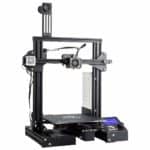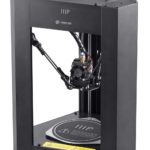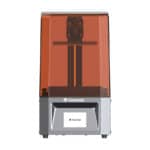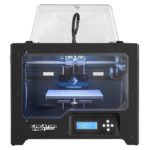Best 3D Printer For Miniatures in 2022
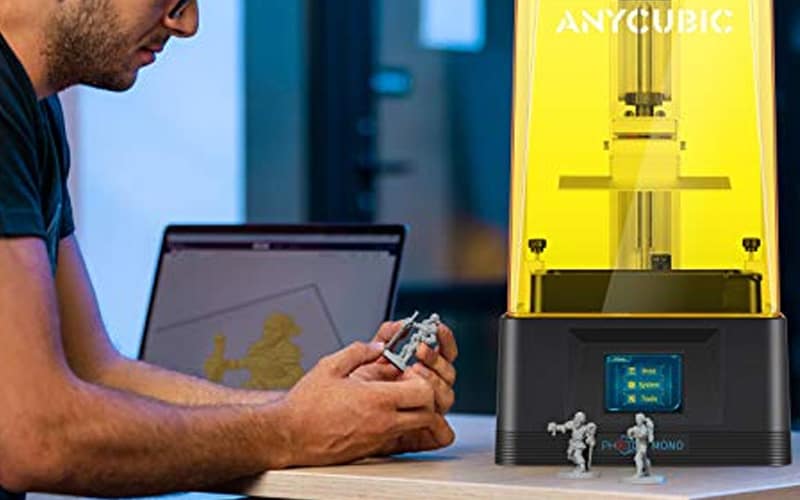
Long gone are the days of trudging down to the local Games Workshop to pay exorbitant prices for figurines. Thanks to the ubiquity of online retail, it’s cheaper and easier than ever to dive into the world of miniatures, whether that’s Warhammer, Dungeons & Dragons, or any other of the wealth of tabletop games that continue to grow in popularity with each passing year. But what if you want to try your hand at making your own bespoke miniatures?
3D printing reaching relative maturity since its DIY Kickstarter origins means designing and printing your own more affordable and accessible than ever before. The market is awash with budget printers that meet the spec required to create more than serviceable miniatures, and why not make your own games from scratch. As with most tech, the problem is wading through the glut of options and making that all-important choice.
To take some of the tedium and stress out of the equation, we’ve compiled this handy guide to the best 3D printer for miniatures.
Products at a Glance
Best 3D Printer For Miniatures in 2022
- Affordable
- Consistent high quality prints
- Suited to tinkering and upgrades
- Build volume
- Ease of assembly
- Tricky bed levelling
- A hands-on printer
- Fully assembled
- Fully assembled
- 0.2 - 0.4 mm nozzle
- 50 to 200 micron resolution
- Ease of use
- Expensive
- Delta printing technique
- Very affordable price point
- Automatic calibration
- Fully assembled
- 50 micron resolution
- Small build volume
- Open-source design may confuse newcomers
- Resin 3D printer
- Fast printing 6-inch monochrome 2K LCD
- CNC-machined aluminum construction
- 50 micron resolution
- Limited connectivity
- Fully enclosed design
- 227 mm x 150 mm x 148 mm build volume
- Heated bed
- Dual extruders for dual color prints
- 100 micron resolution
- Connectivity limited to SD card
- No auto bed levelling
Is it worth getting a 3D printer for miniatures?
The question of if a purchase is ‘worth it’ is always subjective and down to personal circumstance but when it comes to 3D printing miniatures, there are huge upsides to doing this over simply purchasing them.
One big advantage is the insane cost saving to be had. Initially yes, you will be spending that bit more on the 3D printer itself but once it’s up and running the miniatures themselves will cost far less than at retail and if you’re an avid spender on miniatures, you’ll save even more over time. There are drawbacks though, like learning how 3D printing miniatures works and getting your head around the whole 3D printing process. But, if you’re a big miniatures fan and are consistently wanting to add more to your collection, these hurdles seem extremely small and can be overcome with a few online tutorials.
Is it illegal to 3D print Warhammer?
The short answer to this is no, it’s not illegal to 3D print your miniatures for Warhammer as long as you’re using them for personal use. The line gets crossed when you publish these designs online or if your aim is to sell on the miniatures you make. This is due to the fact that Warhammer is copyrighted and therefore, if you’re trying to make a commercial gain, you will be infringing copyright law.
If you’re wanting to use 3D printed Warhammer miniatures in official tournaments you may also find yourself in a little trouble. If your creations aren’t an exact match to the official variants, you could be kicked out. So, if you do want to use 3D printed miniatures in this aspect, ensure that yours are of the highest quality.
How much does it cost to 3D print a miniature?
It is extremely hard to nail down exact figures for 3D printing miniatures due to them varying both in detail and size. Additionally, there are big differences in cost depending on what materials you’ll be using for the 3D print coupled with actually purchasing the model itself to get going.
With all this in mind though, overall, if you’re going to printing 3D miniatures as a regular occurrence, it will be certainly more cost-effective than simply getting them from retail stores.
Is 3D printing cheap?
3D printing can be both cheap or expensive depending on the setup you go for.
First, there are inexpensive but also quite pricey 3D printers so that’s the first aspect that affects how ‘cheap’ 3D printing is. Obviously, you’ll be saving money if you opt for a low-cost 3D printing machine but that might impact the quality so that’s down to personal preference. Then comes the materials you use. The cheapest 3D printing material is PLA with metal powders being the much more costly option. So again, it down to you for how cheap you want to make your 3D printing setup.
All in all though, 3D printing your own creations rather than purchasing them at retail will always cost less as you’re doing the work yourself thus essentially making it ‘cheaper’. It’s the initial cost you’re putting down that’s the big difference, as well as any upkeep for your 3D printer that needs to be done.
Are 3D printed miniatures good?
Regardless of whether it’s being used by a business owner or hobbyist, 3D printing is one of the most popular ways to render digital file designs into three-dimensional objects. Over the past decade or so, 3D printing has developed tenfold and has paved the way for multicolor miniatures to be created with precision and detail. So much so, that many latest-generation 3D printers can create 3D miniature models using a variety of different material filaments, including plastic filament, all the way to opulent materials such as gold!
To answer your question, yes, 3D printers are good, and the main reason for this comes down to the development of 3D printing technology over the years, and the ability to create flawless models with precision in a variety of different filament materials, regardless of the size. However, if you’re currently in the market to purchase a 3D printer specifically for this purpose, then we recommend making sure to do your research prior to purchasing, as not all 3D printers have been optimized for miniature models, especially some of the older ones.
Are 3D printed models allowed in 40K?
3D printing is more popular than ever, especially within gaming communities such as Warhammer 40,000. To break it down, Warhammer 40K is a strategy game that consists of using armies in order to control a terrain that is around the size of a table. Though the game is very entertaining and popular, the miniature models are costly to buy, and often mean that serious gamers must fork out hundreds of dollars on new pieces.
However, 3D printing has been able to pave the way for Warhammer players looking to enjoy the game without being burdened with the huge financial investment required to purchase all of the pieces – which leads many players to opt for printing and decorating miniature models themselves. Technically speaking, it’s completely fine to print your own 3D models for Warhammer 40,000, so long as you’re not claiming that the design created is your own (as it belongs to the original artist and Warhammer 40K) and so long as you’re only using it for your own personal use, such as for playing 40K. However, it’s extremely important to note that if you were to purchase any 40K digital files, print them and then sell them for your own profit, then this would be both illegal and unethical, and could cause you to be stuck with a pretty hefty lawsuit! So, in other words, 3D printed models are allowed in 40K, as long as you are only using 3D printing as a hobby, and only planning to use the models for your own personal usage.
Our Verdict
The Creality Ender 3 Pro tops our list of recommended 3D printers for miniatures for consistently delivering high-quality prints, all at an affordable price point. It’s a perfect first printer for beginners and an easy upgrade for more seasoned hobbyists.
The Qidi Technology i Mates 3D Printer’s fully enclosed design is the headline here, but the printer performs admirably when tackling miniatures due to excellent resolution and nozzle specifications. The ease of use also makes it a strong option for those that want to 3D print free of the hassle of more hands-on kits.
Priced at only $160, the Monoprice Delta Mini shouldn’t be as good as it is. The feature set usually belongs on a much more expensive printer and the print quality towers far above what you’d reasonably expect.
Those looking to tap into the heightened precision and speed of resin-based printers to make miniatures should consider the Elegoo Mars 2. Lastly, for pure value, our money is on the ever-popular FlashForge Creator Pro.
Feel free to drop into the comments section below with any questions or concerns.


